Subthreshold repetitive transcranial magnetic stimulation induces cortical layer-, brain region-, and protocol-dependent neural plasticity
- PMID: 39772671
- PMCID: PMC11708880
- DOI: 10.1126/sciadv.ado6705
Subthreshold repetitive transcranial magnetic stimulation induces cortical layer-, brain region-, and protocol-dependent neural plasticity
Abstract
Repetitive transcranial magnetic stimulation (rTMS) is commonly used to study the brain or as a treatment for neurological disorders, but the neural circuits and molecular mechanisms it affects remain unclear. To determine the molecular mechanisms of rTMS and the brain regions they occur in, we used spatial transcriptomics to map changes to gene expression across the mouse brain in response to two commonly used rTMS protocols. Our results revealed that rTMS alters the expression of genes related to several cellular processes and neural plasticity mechanisms across the brain, which was both brain region- and rTMS protocol-dependent. In the cortex, the effect of rTMS was dependent not only on the cortical region but also on each cortical layer. These findings uncover the diverse molecular mechanisms induced by rTMS, which will be useful in interpreting its effects on cortical and subcortical circuits.
Figures
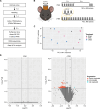
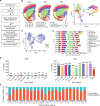
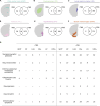

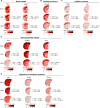
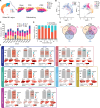
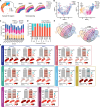
Similar articles
-
Subthreshold repetitive transcranial magnetic stimulation drives structural synaptic plasticity in the young and aged motor cortex.Brain Stimul. 2021 Nov-Dec;14(6):1498-1507. doi: 10.1016/j.brs.2021.10.001. Epub 2021 Oct 12. Brain Stimul. 2021. PMID: 34653682
-
Repetitive transcranial magnetic stimulation recovers cortical map plasticity induced by sensory deprivation due to deafferentiation.J Physiol. 2019 Aug;597(15):4025-4051. doi: 10.1113/JP277507. Epub 2019 Jun 18. J Physiol. 2019. PMID: 31145483 Free PMC article.
-
Microglial Cytokines Mediate Plasticity Induced by 10 Hz Repetitive Magnetic Stimulation.J Neurosci. 2023 Apr 26;43(17):3042-3060. doi: 10.1523/JNEUROSCI.2226-22.2023. Epub 2023 Mar 28. J Neurosci. 2023. PMID: 36977586 Free PMC article.
-
Neuroprotective and plasticity promoting effects of repetitive transcranial magnetic stimulation (rTMS): A role for microglia.Brain Stimul. 2025 May-Jun;18(3):810-821. doi: 10.1016/j.brs.2025.03.012. Epub 2025 Mar 19. Brain Stimul. 2025. PMID: 40118248 Review.
-
Intrinsic Plasticity Mechanisms of Repetitive Transcranial Magnetic Stimulation.Neuroscientist. 2024 Apr;30(2):260-274. doi: 10.1177/10738584221118262. Epub 2022 Sep 5. Neuroscientist. 2024. PMID: 36059273 Free PMC article. Review.
Cited by
-
Developing a reverse translational model of low-intensity rTMS in alcohol use disorder: The influence of theta burst stimulation protocols on binge alcohol drinking in mice.Transcranial Magn Stimul. 2025 Aug;4:100098. doi: 10.1016/j.transm.2025.100098. Epub 2025 Apr 18. Transcranial Magn Stimul. 2025. PMID: 40585525 Free PMC article.
-
Neural Circuit Mapping and Neurotherapy-Based Strategies.Cell Mol Neurobiol. 2025 Jul 26;45(1):75. doi: 10.1007/s10571-025-01595-5. Cell Mol Neurobiol. 2025. PMID: 40715588 Free PMC article. Review.
-
Effects of intermittent theta burst to the left dorsolateral prefrontal cortex on brain volumes and neurometabolites in people with alcohol use disorder: a preliminary investigation.Front Hum Neurosci. 2025 Jul 22;19:1613993. doi: 10.3389/fnhum.2025.1613993. eCollection 2025. Front Hum Neurosci. 2025. PMID: 40765765 Free PMC article.
References
-
- Lenz M., Platschek S., Priesemann V., Becker D., Willems L. M., Ziemann U., Deller T., Müller-Dahlhaus F., Jedlicka P., Vlachos A., Repetitive magnetic stimulation induces plasticity of excitatory postsynapses on proximal dendrites of cultured mouse CA1 pyramidal neurons. Brain Struct. Funct. 220, 3323–3337 (2015). - PubMed
-
- Tang A. D., Bennett W., Bindoff A. D., Bolland S., Collins J., Langley R. C., Garry M. I., Summers J. J., Hinder M. R., Rodger J., Canty A. J., Subthreshold repetitive transcranial magnetic stimulation drives structural synaptic plasticity in the young and aged motor cortex. Brain Stimul. 14, 1498–1507 (2021). - PubMed
MeSH terms
LinkOut - more resources
Full Text Sources

